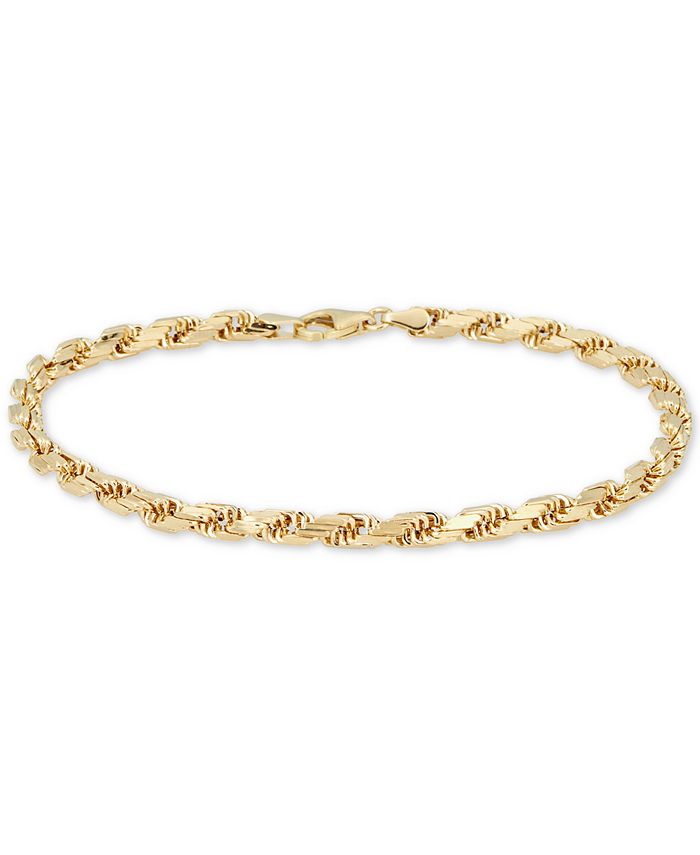14k gold bracelets – how to tell if it’s real or fake

14k gold bracelets are popular jewelry pieces cherished for their beauty, durability, and intrinsic value. As a consumer, being able to identify and authenticate 14K gold bracelets is essential to ensure that you are making a valuable investment in a genuine piece of jewelry. In this comprehensive guide, we will delve into the key characteristics of 14K gold, explore various testing methods for verification, and provide practical tips for distinguishing authentic 14K gold bracelets from imitations or lower-quality alternatives.
Understanding 14K Gold Composition and Purity
- What is 14K Gold?: Define 14K gold as an alloy made up of 58.3% pure gold and 41.7% other metals, such as silver, copper, or zinc. Understand how the addition of these metals enhances the durability and strength of the gold while influencing its color and properties.
- Gold Purity Standards: Compare 14K gold with other purity levels, such as 24K (pure gold), 18K, and 10K gold. Learn about the differences in gold content, color variations, and suitability for jewelry making to appreciate the unique qualities of 14K gold.
Identifying Characteristics of 14K Gold Bracelets
- Hallmark Stamp: Recognize the importance of a hallmark stamp on 14K gold jewelry, indicating the purity of the gold and the manufacturer’s identity. Look for stamps such as “14K,” “585,” or “14KP” engraved on the bracelet to verify its authenticity.
- Color and Luster: Observe the distinct color of 14K gold, which appears slightly paler and warmer than higher karat golds. Notice the rich luster and shine of 14K gold bracelets, reflecting the quality of the alloy and craftsmanship.
- Density and Weight: Feel the weight of the 14K gold bracelet in your hand and assess its density compared to lighter or hollow pieces. Authentic 14K gold should have a substantial weight and feel solid due to its higher gold content.
Testing Methods for Authenticating 14K Gold Bracelets
- Acid Testing: Familiarize yourself with acid testing as a common method for determining the purity of gold. Use nitric acid solutions of varying strengths to observe the reaction of the acid with the gold surface, identifying the presence of base metals.
- Magnet Test: Conduct a magnet test by hovering a strong magnet near the 14K gold bracelet to assess its magnetic properties. Since gold is not magnetic, a genuine 14K gold bracelet should not be attracted to the magnet, distinguishing it from ferrous metals or alloys.
- Electronic Testing: Consider using electronic gold testers or X-ray fluorescence (XRF) analyzers to measure the purity of the gold in a non-destructive manner. These sophisticated tools provide accurate readings of the gold content in the bracelet for reliable authentication.
Spotting Signs of Counterfeit or Low-Quality Gold Bracelets
- Discoloration and Tarnishing: Beware of 14K gold bracelets that exhibit discoloration, tarnishing, or fading of the gold finish, indicating a lower-quality alloy or inadequate plating. Authentic 14K gold maintains its color and luster over time with proper care.
- Allergies and Skin Reactions: Pay attention to any allergic reactions or skin irritations caused by wearing the gold bracelet, which may suggest the presence of nickel or other allergenic metals in the alloy. Genuine 14K gold is hypoallergenic and safe for most wearers.
- Inconsistencies in Craftsmanship: Inspect the craftsmanship of the 14K gold bracelet for inconsistencies, such as uneven seams, rough edges, or poor soldering work. Authentic 14K gold jewelry exhibits precise detailing and high-quality finishing indicative of skilled craftsmanship.
Tips for Buying and Authenticating 14K Gold Bracelets
- Purchase from Reputable Retailers: Choose trusted jewelers or retailers with a reputation for selling authentic and high-quality gold jewelry. Verify the seller’s credentials and inquire about the certification or documentation accompanying the 14K gold bracelet.
- Request Certification: Request a certificate of authenticity or appraisal for the 14K gold bracelet, detailing the gold purity, weight, dimensions, and specifications. Ensure that the certificate is from a reputable gemological laboratory or appraisal authority.
Conclusion:
Identifying and authenticating 14K gold bracelets requires attention to detail, knowledge of key characteristics, and familiarity with testing methods to distinguish genuine pieces from counterfeit or low-quality alternatives.